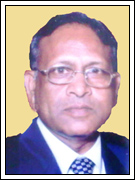 —R.C. Bhansali, Managing Director, Hi-tech Conductors (P) Ltd
—R.C. Bhansali, Managing Director, Hi-tech Conductors (P) Ltd
Based in Mysore, Karnataka,
Hi-tech Conductors Pvt Ltd is a leading manufacturer of ACSR and AAC conductors.
R.C. Bhansali tells us more about his company and discusses major problems faced by power conductor manufacturers. He outlines the company’s growth plans that mainly include setting up of a new manufacturing unit with an investment of Rs.100 crore. Catering to utilities outside home state Karnataka and tapping the exports market are key future plans, notes Bhansali. An interview by
Venugopal Pillai.
With power transmission attracting large investment outlay in the XII Plan, how do you see prospects for the power conductor industry?
The power transmission sector is indeed a very large segment with a wide variety of products involved. Conductors form an important commodity in this sector. The demand for ACSR/AAC/AAAC and other conductors has been substantially high every year.
Thanks to large projects including those aided by World Bank and other development agencies, rural electrification and projects undertaken by Power Grid Corporation, the requirement of conductors is indeed huge. There is a lot of potential in the market even for heavy conductors. State electricity boards are taking up upgradation projects that also holds potential for conductors.
Tell us in brief about the product range of Hi-tech Conductors. Who forms your major clientele?
We are into manufacturing of ACSR/AAC conductors. Our major clientele are the state electricity boards of Karnataka. Other than these we supply conductors to private turnkey project handlers like ABB, SPML etc
How much of your business caters to Central transmission utility Power Grid Corporation of India? Given its envisaged capex plans of roughly Rs.20,000 crore per year in the ongoing XII Plan period, are you expecting higher offtake from PGCIL?
As mentioned, we currently cater to the requirements of the local state electricity boards of Karnataka where the requirement is huge. It takes care of our total production. We have not yet supplied to Power Grid Corporation but we are keen to do so as we envisage large demand from the Central transmission utility. The market potential is very high.
In view of the perceived growth in demand for conductors, do you have near-term capacity expansion plans at your Mysore plant?
Yes, we are in process of expanding our product range. We are in the planning stage to install machines to manufacture heavy conductors. We envisage investment of Rs.100 crore for our new facility, which may commence within the next two years.
Power conductors have been witnessing technological advancements like ACCC, ACCR, etc with contribution from global names like 3M, CTC Global, among others. What is your view?
Yes, much research is going on developing new alloys for power transmission. But then these new products are still in prototype stages. There is threat from the big players but then as they are still under prototype, they will take time to transform the existing market. However, we believe in case there is a requirement of new-generation conductors, we shall also start manufacturing them.
Prices of aluminium and copper are known to be volatile. How do you deal with the situation?
This has been a major problem in our segment. Volatility in prices even within a month is very high. We are safe as we get the price variation from the electricity boards, but then risk arises if prices change in the middle of the month rather than in the beginning. However, hedging the contracts helps in balancing prices of the raw material.
What are some key challenges that power conductor manufacturers face? Are there specific concerns regarding government policy?
Government policies have been favoring local industries in many states. But in Karnataka it has been liberalized. We now have companies from all over the country taking part in Karnataka. The competition is very high. There is a local firm price preference whereby the local industry is being supported. The major problem lies in the execution of the orders, where there are substantial delays in the payments and other aspects. Therefore a lot of capital investment is needed in case we were to go smoothly with the government supplies. The payment position is very critical.
Have you noticed any improvement in the procurement policies of state transmission utilities, PGCIL, etc? Specifically, do you feel that restructuring of SEBs has had a positive impact on procurement policies?
Yes, over the years, state transmission utilities have changed their policies. Earlier local industries were preferred but now the supply is open to anyone. The payment position is very bad and overall the supply to the government agencies has been complicated and cumbersome. The changes have helped in some ways but mostly it is a win-lose situation!
Do you envisage Hi-tech Conductors venturing into the power transmission contracting space?
No, we do not have any plans to go into the total manufacturing and transmission segment due to both the (high) capital investment and the accompanying technical problems.
Please summarize your corporate growth plans for Hi-tech Conductors over the next (say) five to seven years.
We are currently supplying to the electricity boards, our corporate growth plan is to enter into the heavy segment of conductor manufacturing and supplying the same to various electricity boards and also to PGCIL. There has been a lot of requirement in the developing countries where transmission projects are being undertaken. We are planning to tap these markets as well.